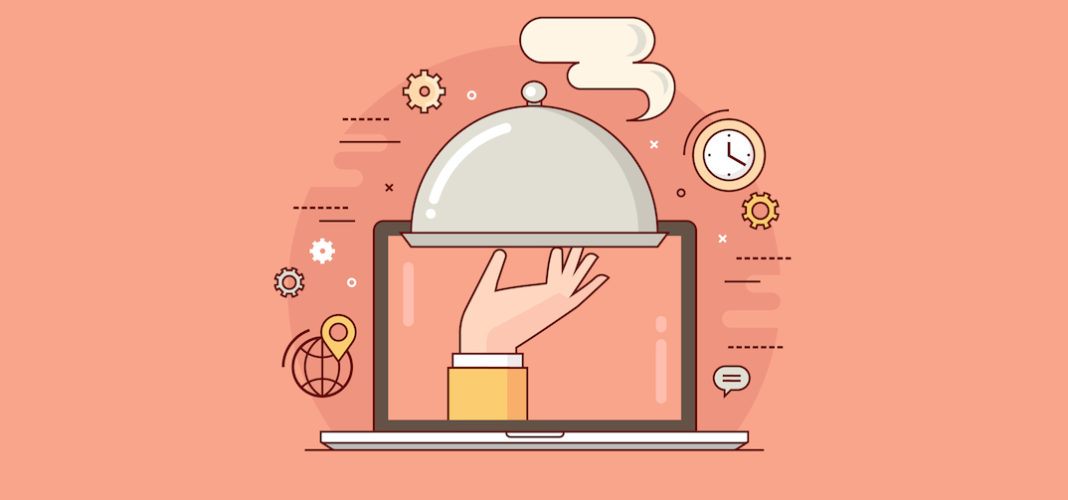The old saying tells us that the way to a person’s heart is through their stomach. Many companies are applying this theory to win the love of their employees. As one survey of more than 1,000 full-time office workers demonstrates, on-the-job happiness jumps dramatically when free food is offered. Providing snacks like granola, chips, cookies and candy seems like a surefire strategy to keep employees smiling and satisfied.
There can, however, be a downside to this smorgasbord of snack food. Unlimited access to unhealthy treats obviously can lead to overeating and weight gain. But the impact is so much more than that. As one 20-something who used to work at a startup in Brooklyn with an all-you-can-eat candy bar told me,
The amount of Swedish Fish I used to eat on a daily basis was obscene.
In addition to gaining weight, she describes how grazing all day on candy affected her productivity.
I would feel like the Energizer bunny and then totally crash.
The spikes in blood sugar made it hard to concentrate and took a toll on her motivation and mood.
All that sugar turned me into a monster. After eating five fistfuls of Gummi Bears my nerves were frayed. Everyone knew not to come near me.
People tend to eat food that is easy to see and easy to grab. The less effort required, the more they consume. When goodies are within arms’ reach, they are especially hard to resist. Consider the following scenario: You get up from your desk to grab a water and notice some chocolate chip cookies sitting in pretty wicker basket nearby. You weren’t even hungry but now those cookies are calling your name.
Still, before you get rid of all the high-calorie snacks in the office and risk the wrath of your employees, consider research that suggests ways to keep free food available, but in ways that help them avoid over-indulging.
A recent study, for instance, highlights the influence of proximity on snacking: When snacks were close to a beverage station, people ate more of them than when they were farther away. Even a couple of feet made a difference. In fact, research showed that the probability of snacking increased by more than half when the drink station was right next to the snack supply.
As a result, it may be as simple as adding a little distance between the drinks and the high-calorie snacks. Put the candies and cookies in a different location, in an area that is less convenient. If you want to encourage healthy eating, place the fruit and vegetables front and center. In addition to being good for the body, these healthy snacks are also good for the mind. As one study showed, the more fruits and vegetables people consumed, the happier, more engaged, and creative they tended to be.
Google harnessed the science of behavior to design a strategy nicknamed Project M&M to combat the problem of staffers eating too many M&Ms. In staff cafeterias, they placed the M&Ms in opaque containers and placed dried fruit and nuts in clear glass containers. It was an ingenious and simple intervention. They didn’t remove the M&Ms altogether, they simply placed them out of sight. The result? Over the course of seven weeks, the 2,000 employees at their New York offices consumed 3.1 million fewer calories.
As a doctor, I witness the effect of diet on mental health first-hand. When I was training to become a psychiatrist, I rarely paid attention to what my patients ate. Unless the person had an eating disorder or depression-associated weight loss, their diet did not get much airtime. I couldn’t have cared less about how many diet sodas they drank or how much candy they ate. Little did I know back then about the relationship between diet and brain health.
These days, I grill my patients about what they eat and literally prescribe a diet rich in fruits and vegetables. I share these proximity strategies, recommending, for example, that they keep a bag of carrots or an apple within arm’s reach. They can trick themselves out of wanting unhealthy snacks if the hassle of obtaining them is too high.
Ultimately, If they are going to grab a snack, it may as well be mood-enhancing. The only side effects are feeling and looking good.
We are creatures of our environment and this is especially true when it comes to food. Create a workplace that encourages healthy habits. Just be sure to make the healthiest options the easiest options available.
Now, please pass the crudité.
I wish you all the best,
Dr. Samantha Boardman






